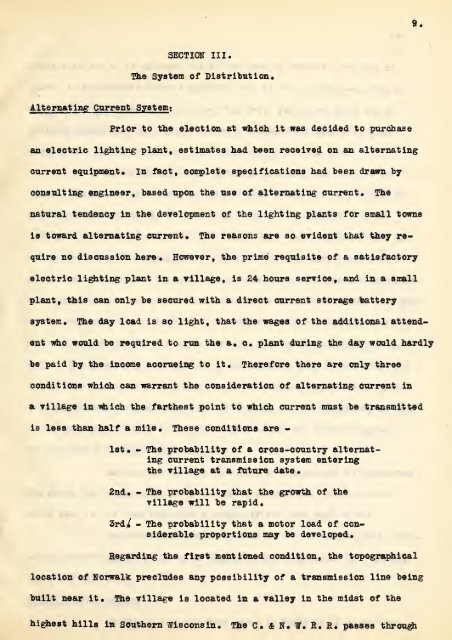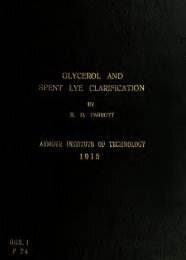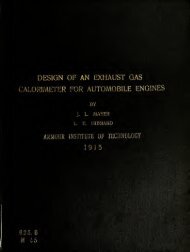View/Open - Illinois Institute of Technology
View/Open - Illinois Institute of Technology
View/Open - Illinois Institute of Technology
Create successful ePaper yourself
Turn your PDF publications into a flip-book with our unique Google optimized e-Paper software.
Alternating Current System ;<br />
SECTIOK III.<br />
T!!he System <strong>of</strong> Distribution,<br />
Prior to the election at which it was decided to purchase<br />
an electric lighting plant, estimates had been received on an alternating<br />
current eq.uipment. In fact, complete specifications had been drawn by<br />
consulting engineer, based upon the use <strong>of</strong> alternating current. The<br />
natural tendency in the develojanent <strong>of</strong> the lighting plants for small towns<br />
is toward alternating current. The reasons are so evident that they re-<br />
quire no discussion here. However, the prime requisite <strong>of</strong> a satisfactory<br />
electric lighting plant in a village, is 24 hours service, and in a small<br />
plant, this can only be secured with a direct current storage tettery<br />
system. The day load is so light, that the wages <strong>of</strong> the additional attend-<br />
ant irho would be required to run the a. c. plant during the day would hardly<br />
be paid by the income accirueing to it. Therefore there are only three<br />
conditions which can warrant the consideration <strong>of</strong> alternating current in<br />
a village in ishich the farthest point to which current must be transmitted<br />
is less than half a mile. These conditions are -<br />
lat. - The probability <strong>of</strong> a cross-country alternating<br />
current transmission system entering<br />
the village at a future date,<br />
2nd, - The probability that the growth <strong>of</strong> the<br />
village will be rapid,<br />
3rd/ - The probability that a motor load <strong>of</strong> considerable<br />
proportions may be developed.<br />
Hegarding the first mentioned condition, the topographical<br />
location <strong>of</strong> Norwalk precludes any possibility <strong>of</strong> a transmission line being<br />
built near it. The village is located in a valley in the midst <strong>of</strong> the<br />
highest hills in Southern Wisconsin. The C. & N, W. R. R. passes throu^













